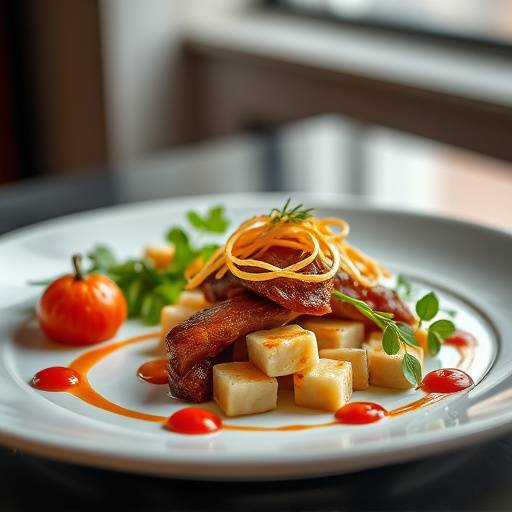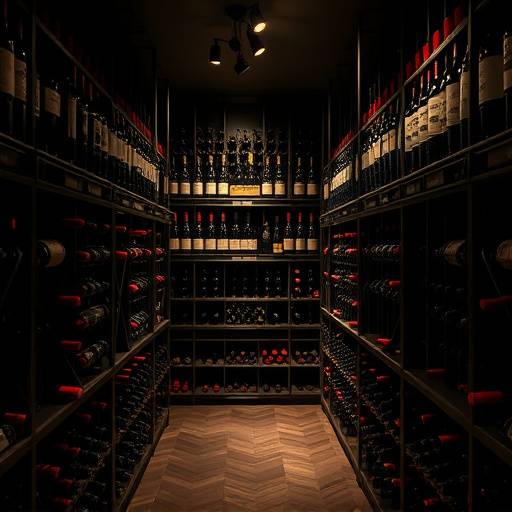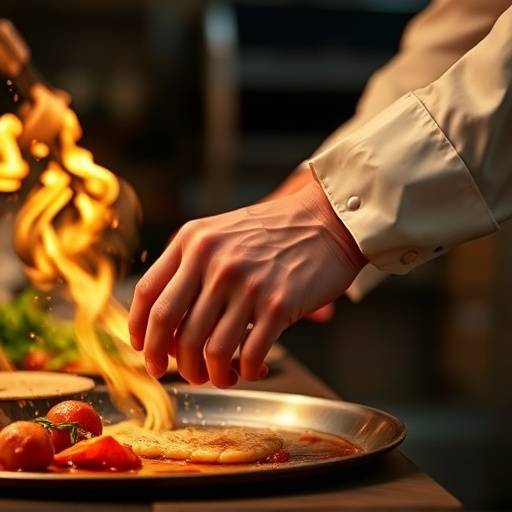
Elevating the Culinary Experience: The Art of Plating
October 26, 2024
At The Gilded Spoon, we believe that dining is not just about taste; it's about the entire sensory experience. One of the most critical, and often overlooked, aspects of this is the art of plating. A dish can taste exquisite, but its visual presentation can significantly elevate or diminish the diner's anticipation and enjoyment. Our Head Chef, Jean-Pierre Dubois, emphasizes that plating is not merely about making food look pretty; it’s about telling a story.
“Each element on the plate should have a purpose,” explains Chef Dubois. “The arrangement should highlight the ingredients, create balance, and guide the diner’s eye.” He advocates for using contrasting colors, textures, and shapes to create visual interest. For example, a vibrant green pea puree can provide a striking contrast to a seared scallop, while a crispy garnish adds texture to a smooth sauce.
Furthermore, the choice of plate itself plays a crucial role. A stark white plate provides a blank canvas, allowing the colors of the food to pop, while a darker plate can add a touch of drama. The size of the plate is also important; too small, and the dish appears crowded; too large, and it can feel empty. Proper spacing and negative space are just as vital as the ingredients themselves.
Ultimately, the goal of plating is to enhance the diner's anticipation and create a memorable experience. It’s a testament to the chef’s dedication to their craft and their desire to share their passion with the world. When done well, plating can transform a simple meal into a work of art, leaving a lasting impression on the palate and the mind.

Uncorking the Secrets: A Guide to Wine Pairing
October 19, 2024
Wine pairing can often seem like a daunting task, shrouded in mystery and complex rules. However, at The Gilded Spoon, our sommelier, Isabella Rossi, believes that wine pairing should be an enjoyable and accessible experience for everyone. The fundamental principle is to find wines that complement and enhance the flavors of the food, rather than overpowering them.
“The key to successful wine pairing is understanding the basic characteristics of both the wine and the dish,” says Isabella. “Consider the weight of the wine – is it light-bodied, medium-bodied, or full-bodied? And how does that compare to the richness of the food?” Lighter wines, like Pinot Grigio, pair well with delicate dishes such as salads, seafood, or light pasta. Medium-bodied wines, such as Chardonnay or Merlot, are more versatile and can complement a wider range of flavors, including roasted chicken or pork. Full-bodied wines, like Cabernet Sauvignon, are best suited for rich, flavorful dishes such as steak or hearty stews.
Another important consideration is acidity. Acidic wines, such as Sauvignon Blanc or Riesling, can cut through richness and cleanse the palate, making them a great pairing for fatty foods. Sweet wines, like Sauternes or Moscato, are often paired with desserts, but they can also work well with savory dishes that have a touch of sweetness, such as foie gras or spicy Asian cuisine.
Ultimately, the best way to learn about wine pairing is to experiment and trust your own palate. Don’t be afraid to try different combinations and discover what works best for you. And when in doubt, ask your server or sommelier for their recommendations. They are there to guide you and help you find the perfect pairing to enhance your dining experience.

Mastering the Basics: Essential Cooking Techniques
October 12, 2024
Whether you're an experienced home cook or just starting out, mastering a few essential cooking techniques can significantly improve your culinary skills. At The Gilded Spoon, we believe that understanding the fundamentals is the key to creating delicious and memorable meals. Here, Chef Eleanor Vance shares some of her favorite tips and techniques:
Sautéing:
This is a quick and versatile cooking method that involves cooking food in a small amount of fat over relatively high heat. The key to successful sautéing is to ensure that the pan is hot before adding the food and to avoid overcrowding the pan. This will allow the food to brown evenly and develop a flavorful crust.
Roasting:
Roasting is a dry-heat cooking method that is perfect for cooking large cuts of meat, poultry, or vegetables. Roasting allows the food to caramelize and develop a rich, concentrated flavor. For best results, preheat the oven to the correct temperature and use a roasting pan with a rack to allow air to circulate around the food.
Braising:
Braising is a combination cooking method that involves searing the food first and then simmering it in liquid for an extended period of time. Braising is ideal for tough cuts of meat, as it tenderizes them and infuses them with flavor. The key to successful braising is to use a heavy-bottomed pot and to ensure that the liquid covers about two-thirds of the food.
Making Sauces:
A great sauce can elevate any dish from ordinary to extraordinary. Whether you're making a simple pan sauce or a complex reduction, understanding the basic principles of sauce-making is essential. Start with a flavorful base, such as stock or wine, and then add aromatics, herbs, and spices to create a unique and delicious sauce. Be sure to taste and adjust the seasoning as needed.
By mastering these essential cooking techniques, you'll be well on your way to becoming a confident and creative cook. Don't be afraid to experiment, try new things, and most importantly, have fun in the kitchen!


